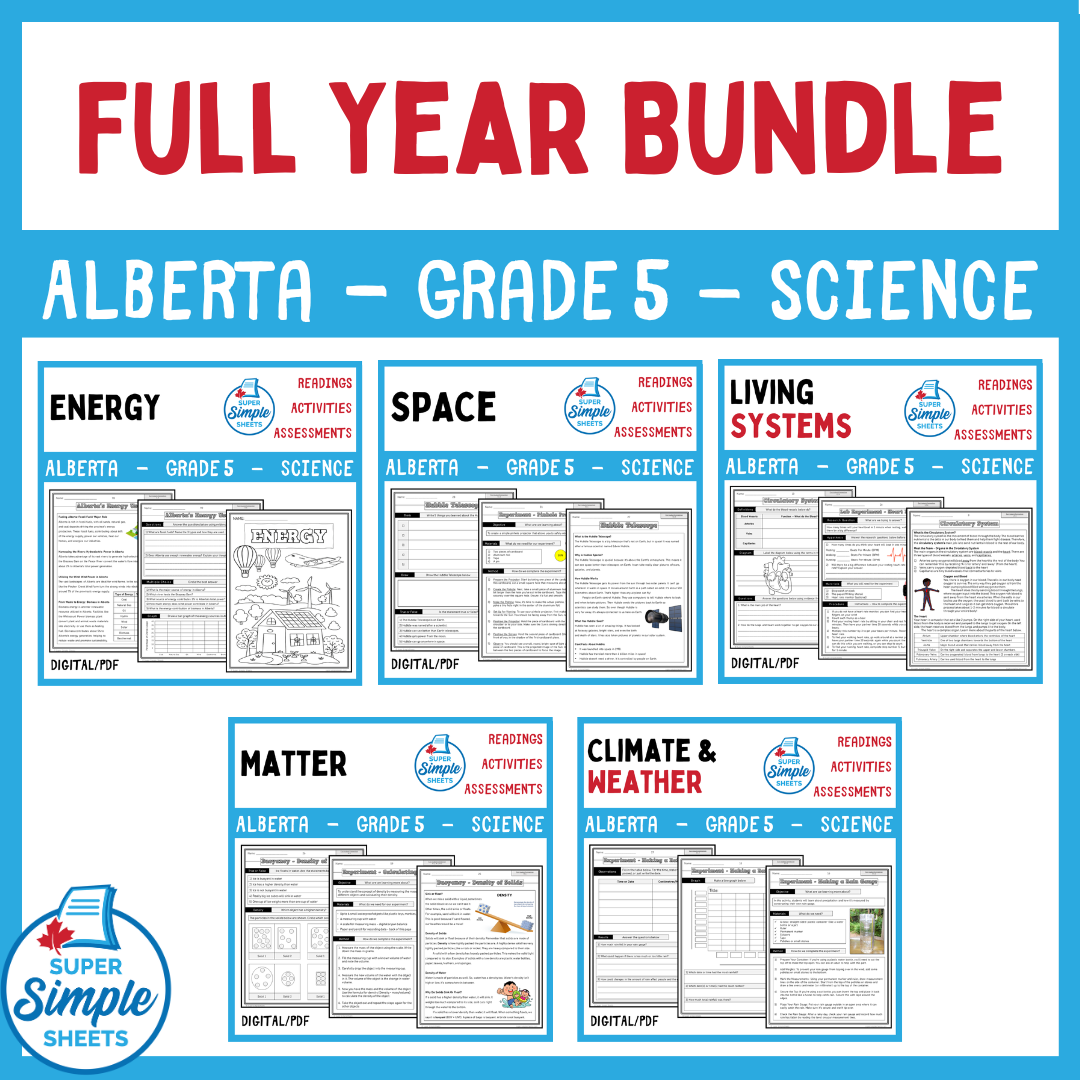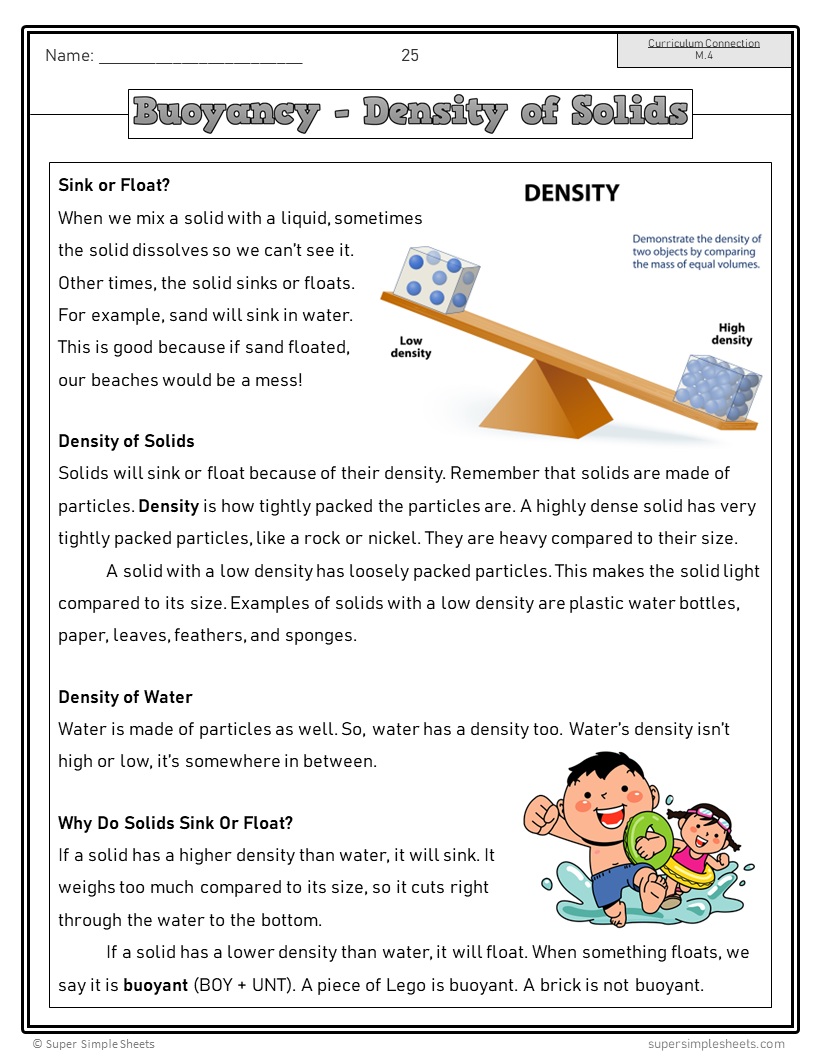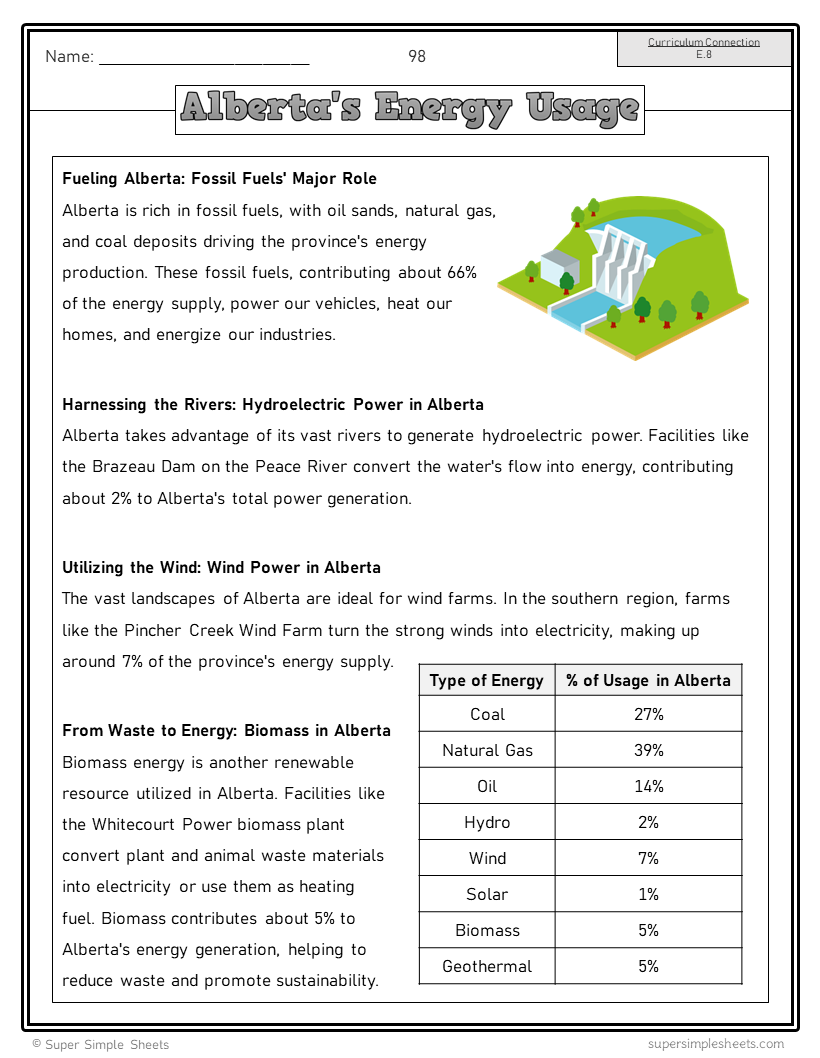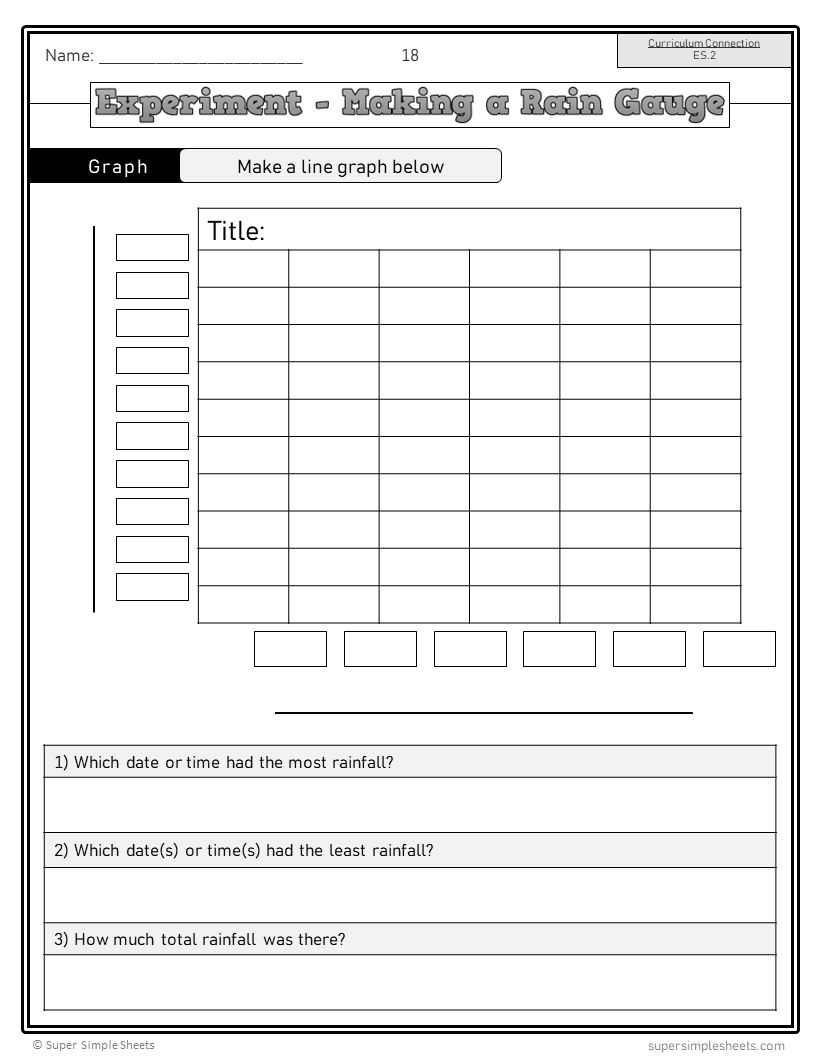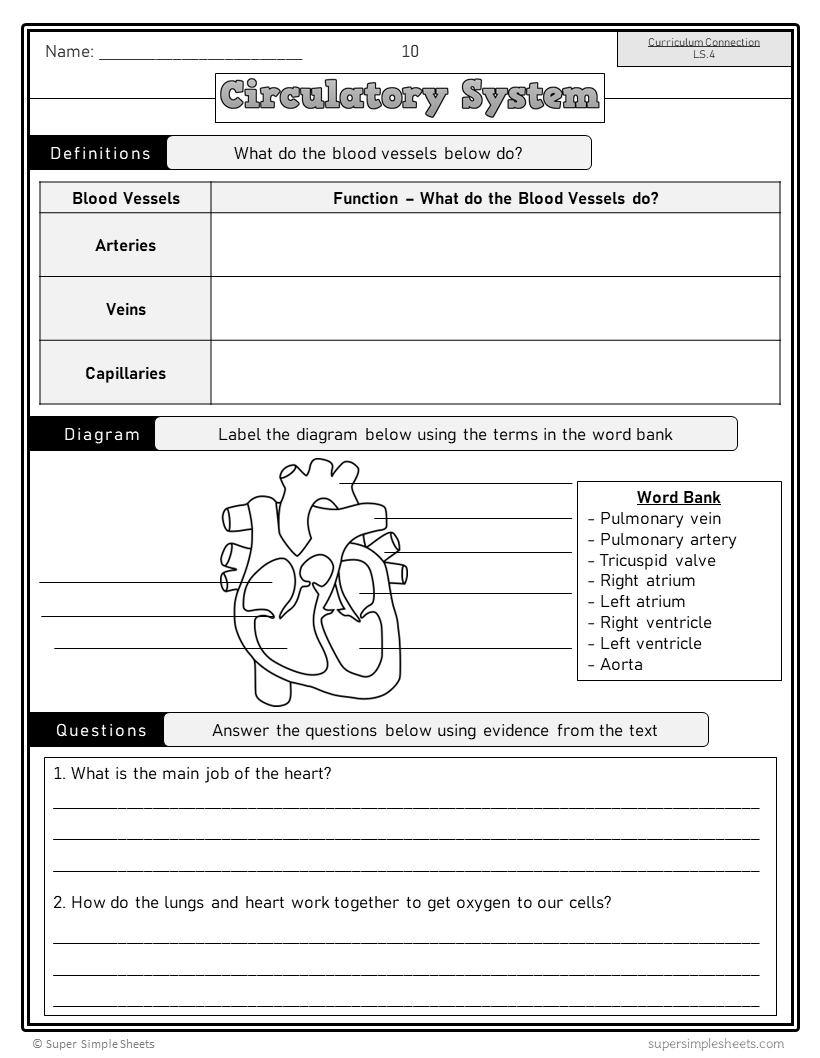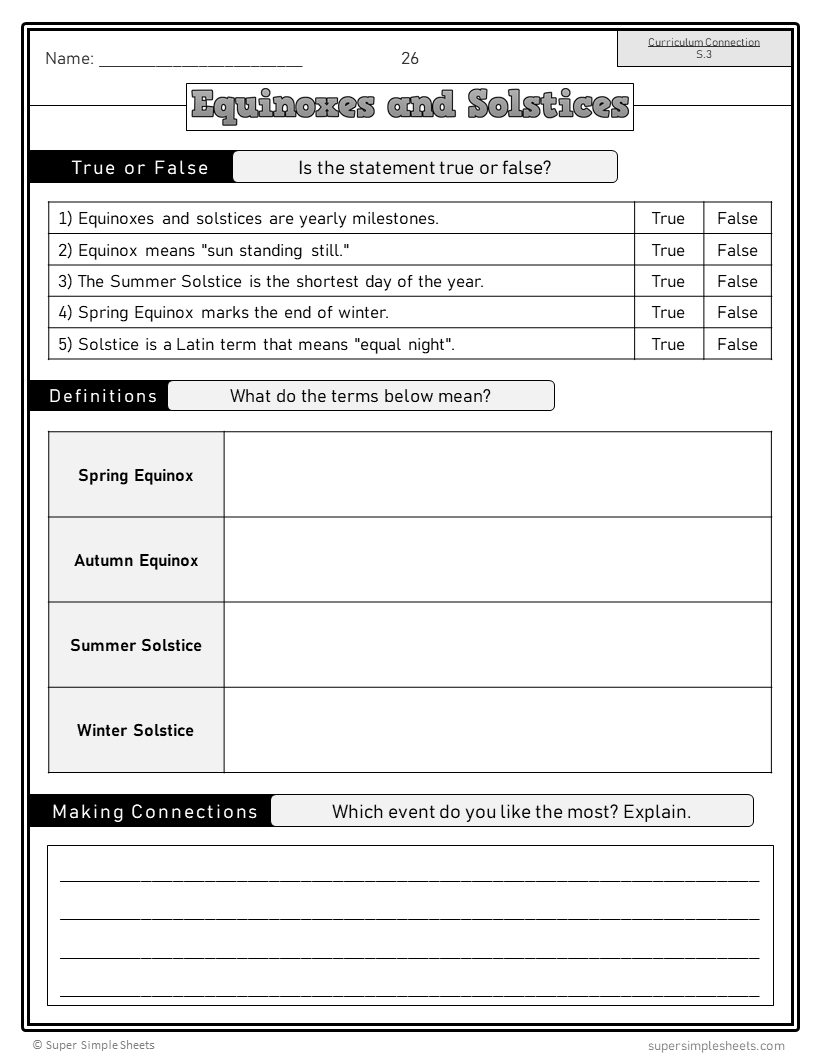Science - Alberta Grade 5 - FULL YEAR BUNDLE
Science - Alberta Grade 5 - FULL YEAR BUNDLE
Interested in a bundle? Shop below instead!
Couldn't load pickup availability
UPDATED FOR THE NEW 2023 CURRICULUM! BOTH PDF AND GOOGLE SLIDES VERSIONS ARE INCLUDED!
FULL YEAR BUNDLE! Alberta Science 2023 Curriculum - Grade 5. This product was created to cover the NEW Alberta 2023 Science Grade 5 Curriculum. Both PDF and Google Slides versions are included for easy teaching!
There are 734 activity sheets that cover the outcomes in the NEW science curriculum. The units contains many fun activities, including readings, experiments, assignments, matching, true or false, and coding.
We have added computer science activities as well to cover the outcomes in the NEW science curriculum. Check out the previews of the units to learn more about how they can benefit your students.
Strand 1: Matter
Some of the concepts that are covered:
- What is matter?
- The particle theory of matter
- Physical properties of matter: state, mass, volume, density, compressibility
- All about liquids
- Experiment – testing the flow of liquids
- Using liquids – hydraulics, lubrications
- Characteristics of solids
- Using solids – real world applications
- Experiment – weight of solids versus liquids
- Buoyancy – density of solids
- Buoyancy – scuba diving safety
- Coding activity – coding a scuba diver
- Experiment - buoyancy of water versus sugar water versus saltwater
- Experiment – buoyancy of different liquids
- Experiment – making a floating raft or boat
- Properties of gases
- Experiment – does air have any weight/mass?
- Air in our atmosphere
- Using gases – real world applications
- Relationship between mass, volume, and density
- Experiment – measuring mass activity
- Using referents to measure mass
- Estimating the mass of objects
- Calculating the density of objects using mass and volume
- Determining the volume of objects
- Experiment – measuring the volume and density of objects
- Compressibility – water versus air
- Experiment – testing which is easier to compress: water or air
- Experiment – using air compression for work
- Technologies that use air compression – air compressor, stomp rocket, and pneumatic tools
- Incompressible liquids – hydraulics
- Activity – building a hydraulic model
- Coding activity – maneuvering an excavator
- Buoyancy – fish using its swim bladder
- Coding activity – writing code to move a submarine through a map
- STEM Assignment – creating a submarine and writing code for it
- Unit test
- Answer pages for all activities
Strand 2: Energy
Some of the concepts that are covered:
- Fluids – gas and liquids
- Properties of air allowing flight
- Experiment – power of air pressure
- Four forces of flight – lift, drag, thrust, weight
- Lift – Bernoulli’s principle
- Lift – angle of attack
- Drag – aerodynamics
- Experiment – making a paper airplane
- Weight – force of gravity opposing lift
- Thrust – propulsion and jet engines
- Experiment – building a propeller
- Control surfaces of a plane
- How do animals fly?
- Animal adaptations – propelling in air/water
- Design features of animals – adapting drag
- Design features of vehicles – using a spoiler to reduce lift
- How parachutes increase drag
- Experiment – testing a parachute
- Technologies that use flight – atlatl, bow and arrow
- Activity – making a glider
- Coding activity – autopilot on planes
- Writing code – coding an airplane safely to the airport using loops
- Buoyant forces and densities
- Experiment – buoyancy of water versus dish soap
- Experiment – designing the ultimate cargo boat
- Lighter than air flying devices – helium airships and hot air balloons
- Renewable energy versus non-renewable energy
- Solar energy – benefits and drawbacks
- Wind energy – benefits and drawbacks
- Experiment – making a balloon car
- Hydro energy – benefits and drawbacks
- Renewable sources of energy – biomass and tidal energy
- Geothermal energy – reading a diagram
- Non-renewable energy – fossil fuels: advantages and disadvantages
- Nuclear energy – advantages and disadvantages
- Alberta’s use of different sources of energy – fossil fuels, hydro, wind, biomass, etc.
- Making a graph that represents Alberta’s energy use
- Conserving energy - survey
- Energy efficient appliances
- Activity - energy audit at home and at school
- Coding activity – writing code for a thermostat to save energy
- How Indigenous groups conserve energy
- Unit test
- Answer pages for all activities
Strand 3: Earth Systems – Climate, Weather, and Agriculture
Some of the concepts that are covered:
- What is weather?
- Difference between weather and climate
- Weather measuring tools
- Experiment – making a weather vane
- Experiment – making an anemometer
- Graphing the results from the anemometer
- Experiment - making a rain gauge
- Graphing the results from collecting rainfall data
- Comparing climate data from Lethbridge (south) and Fort McMurry (north)
- World climate zones
- Research activity – studying the climate zones
- Graphing climate data from cities in different climate zones
- Interpreting data from cities in different climate zones
- Ocean climates – coastal cities versus inland cities
- Microclimates – Victoria, BC
- Activity – finding a microclimate on your school yard
- Indigenous climate observations
- Weather forecasting – historical methods
- Weather sayings for forecasting
- Weather forecasting – current methods: satellites, weather stations, RADAR
- Coding activity – RADAR
- Research – local weather reports
- Writing code – coding the local weather report
- Writing an application for predicting weather
- Activity – making a weather map of Alberta
- Properties of air – air pressure and weather
- Experiment – measuring the air pressure
- Activity – making a new product for surviving weather
- Impact of climate on our everyday life – infrastructure and transportation
- Impact of climate on our clothing and recreational choices
- How climate influences animal behaviour – migration, hibernation, behaviour
- Farming in Alberta – how weather impacts farming practices
- What is conservation agriculture?
- Crop rotation and controlling soil erosion
- Experiment – model of soil erosion
- Writing code – soil types
- Coding activity – making a soil testing machine
- Farming animals in Alberta
- Conservation agriculture – farming animal practices
- Farmers responding to weather events – droughts, floods, wildfires, and windstorms
- Activity – farmer role play using conservation agriculture practices
- Animals predicting weather changes – short term and long term
- Unit test
- Answer pages for all activities
Strand 4: Living Systems – Internal Body Systems
Some of the concepts that are covered:
- Introduction to body systems
- Circulatory system – reading and questions
- Heart disease – causes, symptoms and questions
- What is cardiac arrest and CPR?
- Experiment – testing heart rate before and after activity
- STEM assignment – pacemakers
- Coding – writing code for a pacemaker
- Respiratory system – reading and questions
- Respiratory system – activities: matching, diagram, fill in the blanks
- Activity – Paper bag lungs
- Common disease – asthma
- Digestive system – reading and questions
- Experiment – making a model digestive system
- Skeletal system – reading and questions
- Skeletal disease – osteoporosis
- Experiment – demonstrating osteoporosis using vinegar and eggs
- Muscular system – reading and questions
- Nervous system – reading and questions
- Experiment – testing the nervous system with “The Ruler Drop”
- Optical Illusions – Our nervous system tricking us
- Research activity – creating an optical illusion
- Common diseases – stroke and epilepsy
- Nervous system injury – paralysis
- Experiment – Living with paralysis
- Animals with similar and different body systems
- Indigenous understanding of body systems
- Interrelations between systems
- Story – Body systems working together: “Jack the Future Olympian”
- Smoking and the Sun – Effects on Health
- Health and Technology – Playing video games
- Robotic surgery – future of healthcare
- STEM Assignment – creating a robot surgeon
- STEM Assignment – Building a Health Care Machine
- Phloem and Xylem – transport systems for plants
- Step by step process of transporting water and nutrients in plants
- Experiment – testing the water and nutrient transportation process
- Unit test
- Answer pages for all activities
Strand 5: Space
Some of the concepts that are covered:
- Understanding astronomical phenomenon
- Earth’s rotation and revolution
- Day and night – Earth’s axis
- Polar day and polar night
- Inuit story – Midnight Sun
- Experiment – rotating Earth
- Experiment – making a sundial
- Seasons – Earth’s orbit
- Experiment – creating a model of Earth’s orbit
- Equinox and solstices
- Seasonal changes – impact on agriculture and hunting
- The Woodland Cree’s Six-Season Model
- Daylight saving time
- Story – 24 Hours of Darkness
- Phases of the moon
- Experiment – cookie moon phases
- Making a calendar – representing moon phases
- Coding activity – programming a moon calculator
- Moon phases – effects on agriculture and hunting
- Nocturnal animals
- Lunar eclipses versus solar eclipses
- Experiment – eclipse simulation
- Ocean tides and their effects on hunting and agriculture
- Anishinaabe story – Fisher Brings the Summer
- What are auroras?
- Art activities – making a model aurora
- Métis – astronomical phenomena
- Coding activity – Using the North Star
- Métis Seasonal Rounds
- Cree Seasonal Rounds
- Dene Seasonal Rounds
- Unit test
- Answer pages for all activities
This is a comprehensive bundle that will save you hours of planning! It has been tested and found effective in helping students achieve the learning outcomes in the NEW 2023 science curriculum.
Share

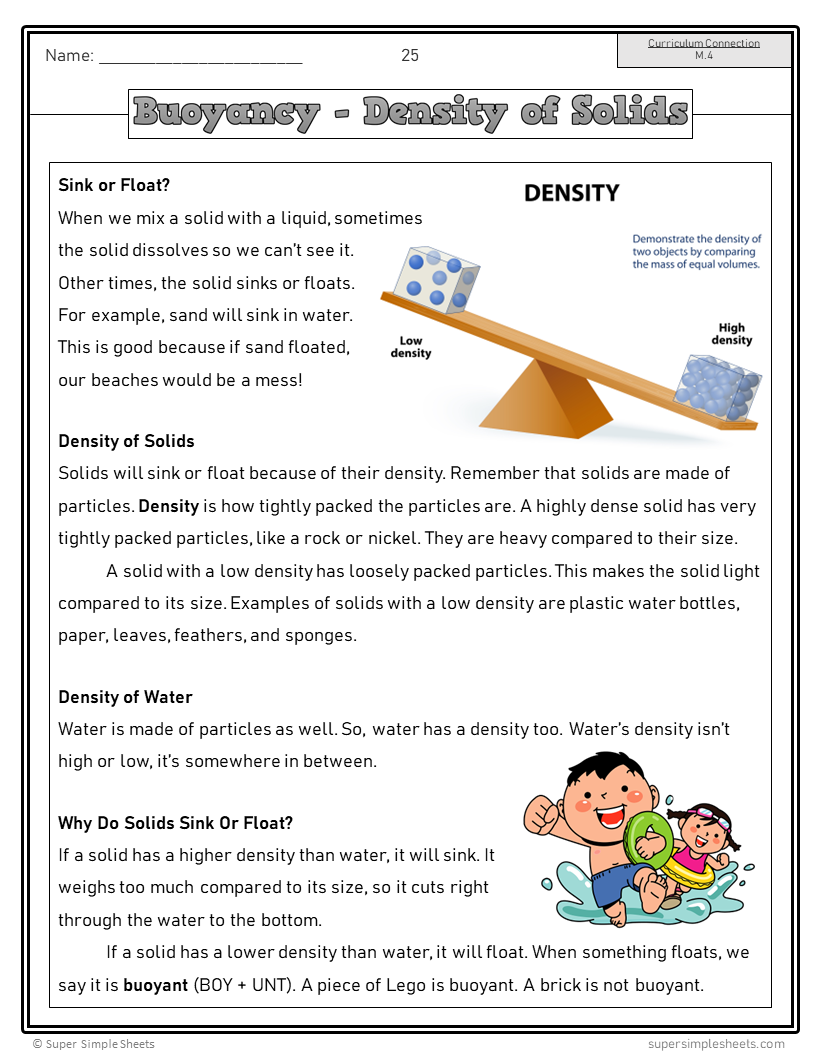
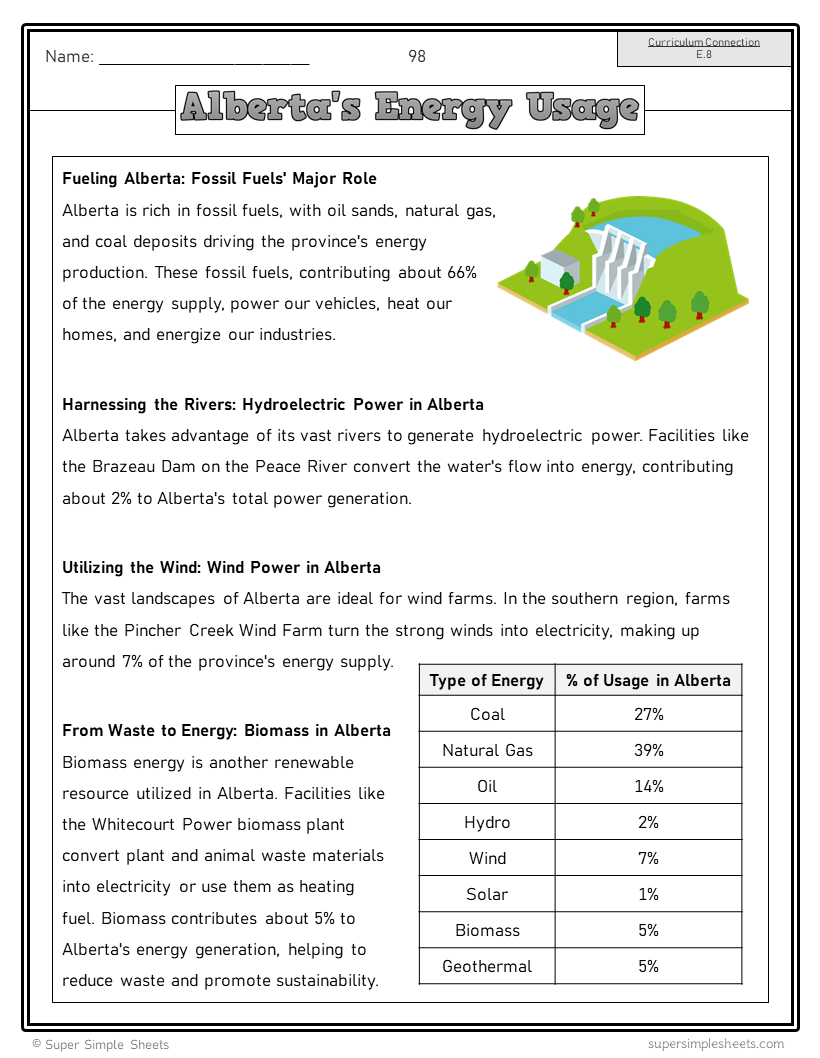
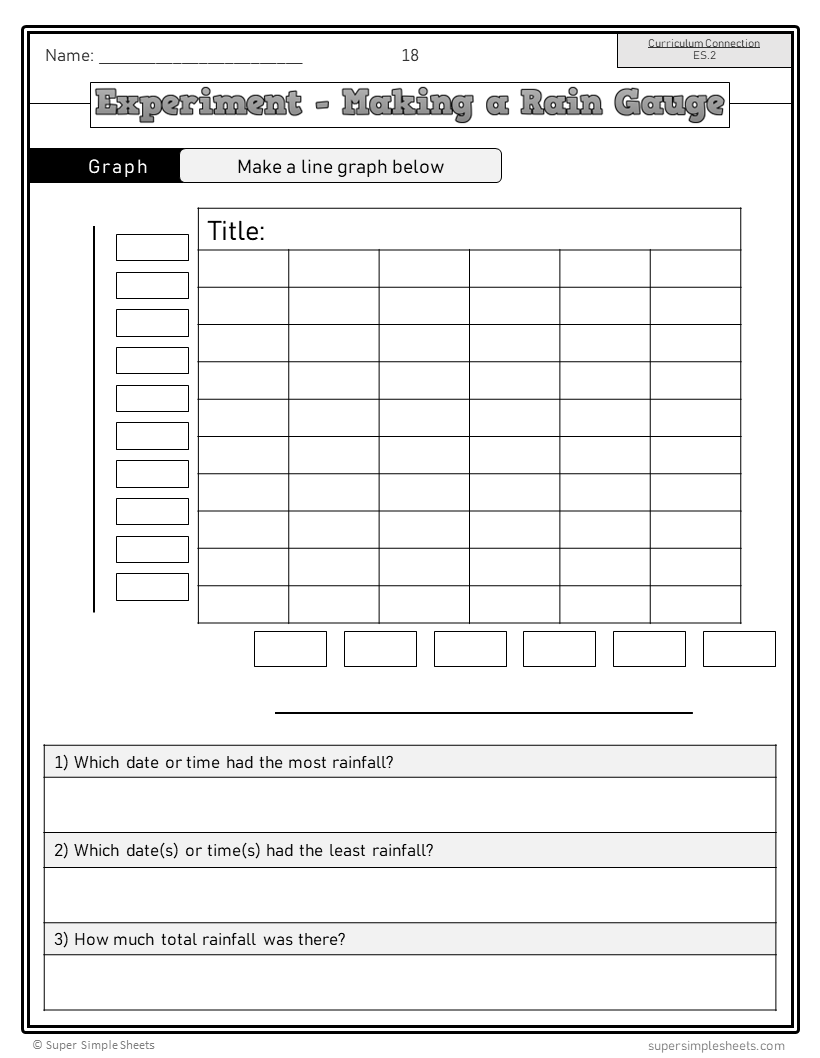
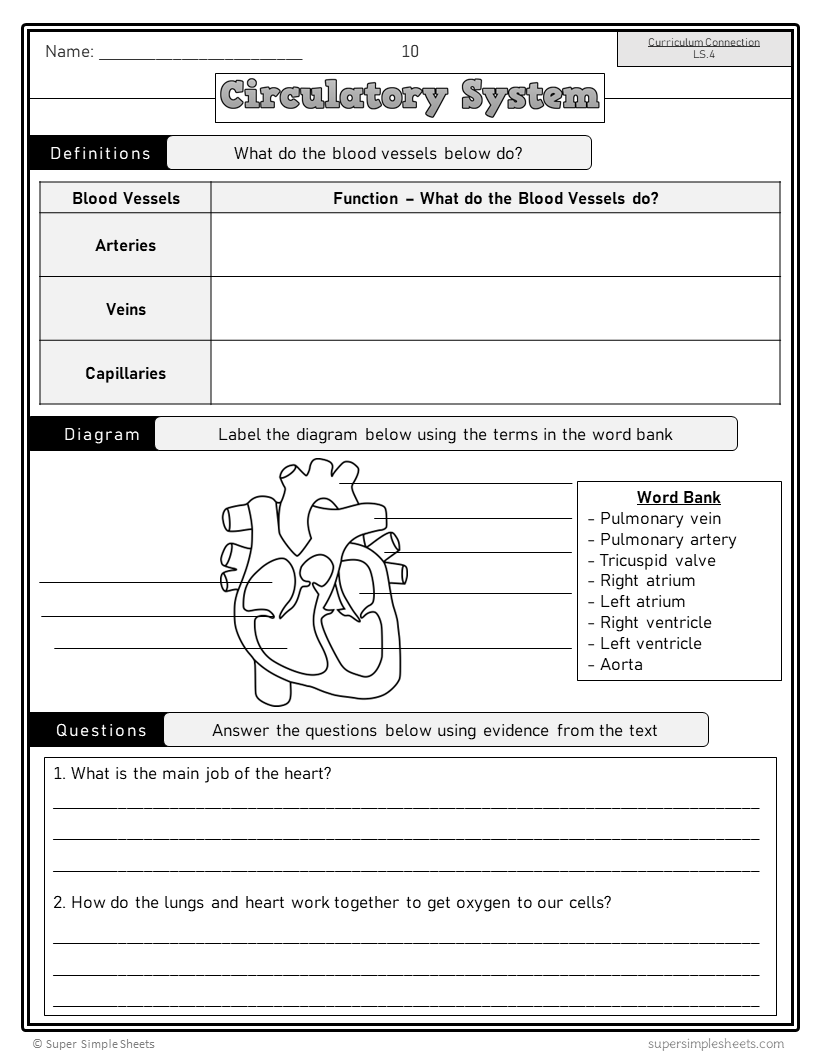
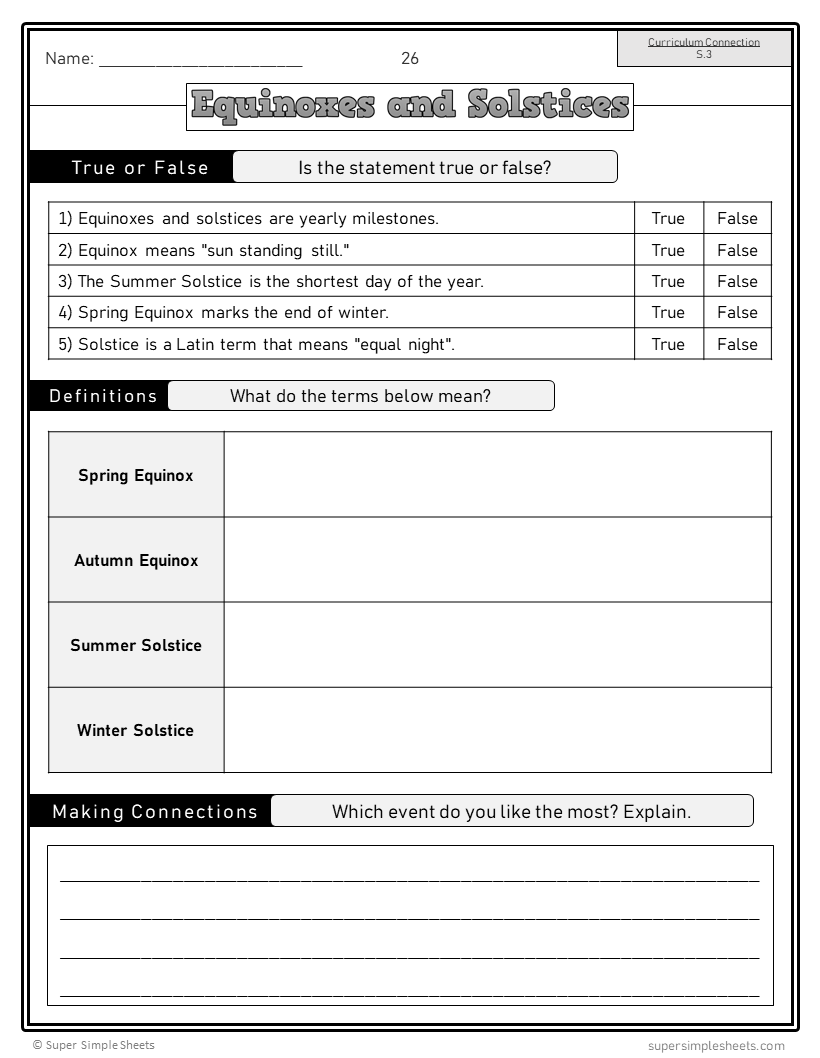
We loved the experiments in the Science Curriculum
So far so good.
This year I am trying to develop a better work-life balance. These resources are going to save me hours and hours or time.
